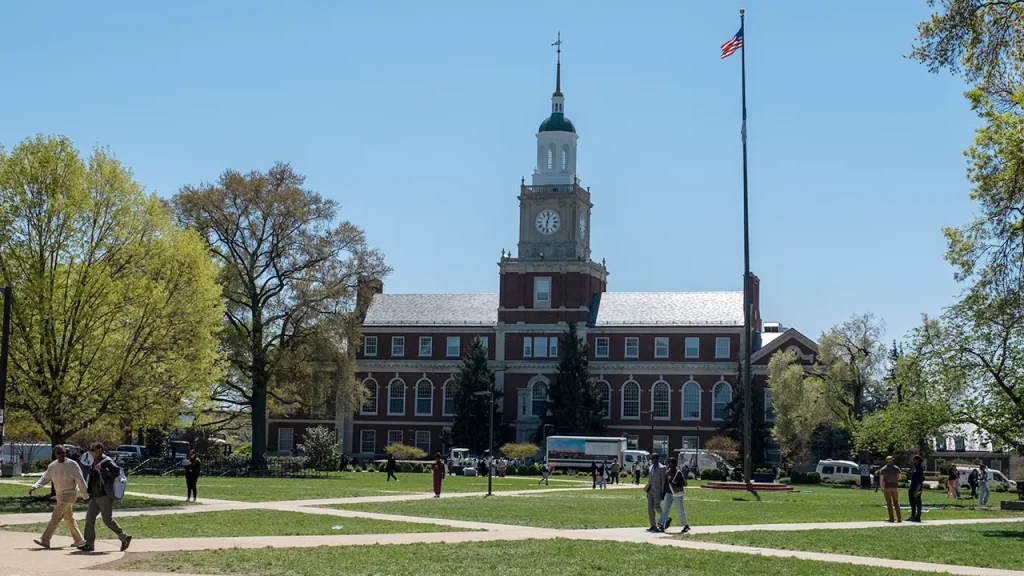Teen Suspect Arrested in Howard University Homecoming Shooting
In a significant development following last month’s shooting at Howard University’s homecoming celebration, authorities have apprehended 17-year-old Kaevaughn Dudley. The Metropolitan Police Department announced the arrest on November 14, charging the teenager as an adult with multiple serious offenses including assault with intent to murder while armed. This incident, which left five people injured including a 13-year-old, cast a shadow over what should have been a joyous university celebration and raised concerns about safety at campus events.
According to the U.S. Attorney’s Office of the District of Columbia, the violence unfolded on October 24 during Howard University’s Yard Fest when nine men dressed in black clothing, some wearing face masks, were observed walking near the campus. Investigators report that this group encountered a smaller group of individuals, including the 13-year-old victim. After a brief verbal exchange where the larger group allegedly asked, “What’s up with ya’ll?” and the smaller group responded with “Nothing” before attempting to walk away, the situation escalated dramatically. Surveillance footage reportedly captured Dudley separating from his group, drawing a handgun, and firing multiple shots at the retreating individuals before fleeing the scene.
The shooting’s aftermath was chaotic but swift, with police officers already present for the homecoming event responding immediately to the sound of gunfire. They discovered five victims suffering from gunshot wounds – three adult men, one adult woman, and one juvenile male – all of whom were quickly transported to a nearby hospital. Though initial reports led to the arrest of two 19-year-olds for carrying pistols without licenses, authorities later determined these individuals were not connected to the actual shooting. Investigators recovered three handguns at the scene: a privately made Polymer 80 firearm, a Smith & Wesson SD9 2.0 9mm, and a Glock 19 9mm, highlighting concerns about weapon accessibility.
The human toll of this violence extends beyond the immediate trauma of the event. While none of the victims were Howard University students, one victim attends Morgan State University and now faces life-changing consequences, having been paralyzed from the chest down as a result of the shooting. The female victim remains hospitalized, underscoring the devastating and long-lasting impacts that gun violence inflicts on individuals, families, and communities. These personal tragedies transform statistics into stories of lives forever altered by a moment of senseless violence at what should have been a celebration of achievement and community.
The investigation that led to Dudley’s arrest demonstrates the meticulous work required in modern criminal investigations. Detectives analyzed “numerous surveillance cameras and hundreds of hours of footage” to identify the suspect. This digital detective work eventually paid off when members of MPD’s Criminal Apprehension Unit located and arrested Dudley without incident on November 14. The teenager now faces multiple charges including five counts each of assault with intent to murder while armed, assault with intent to kill while armed, aggravated assault while armed, and possession of a firearm during a crime of violence. His preliminary hearing is scheduled for December 18, marking the beginning of what will likely be a lengthy legal process.
This incident at Howard University joins a troubling pattern of violence affecting college campuses and their surrounding communities across the nation. The shooting occurred at a homecoming celebration – traditionally a time of alumni reunion and school pride – transforming a moment of unity into one of fear and tragedy. The fact that violence disrupted such a significant cultural event at one of America’s most prestigious historically Black universities raises important questions about safety at campus gatherings and the broader issue of gun violence affecting young people in urban settings. As the legal process unfolds for the accused, the affected individuals, their families, and the university community are left to grapple with the emotional and physical aftermath of violence that has become all too common in American life.


